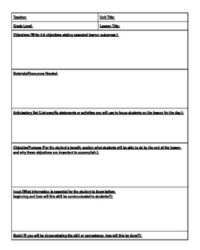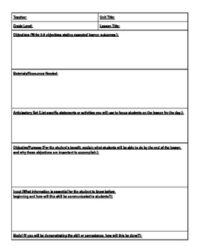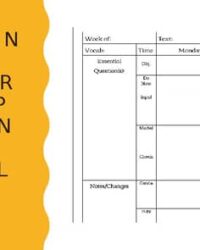Teaching effectively is a skill that blends art with science, and for decades, educators have sought structured approaches to ensure every lesson truly hits home for students. One of the most enduring and widely recognized frameworks for instructional design is the Madeline Hunter model. It’s a powerful tool that helps teachers plan, deliver, and assess lessons with a clear focus on student learning and understanding, making sure no crucial step is missed in the educational journey.
This model provides a systematic way to think about what students need to learn, how they’ll learn it, and how we, as teachers, can confirm that learning has occurred. It’s designed not as a rigid script, but as a flexible guide to ensure thoughtful planning that maximizes instructional time and student engagement. By breaking down the learning process into manageable, logical stages, it empowers educators to create dynamic and impactful classroom experiences day after day.
Understanding the Core Components of the Madeline Hunter Model
The Madeline Hunter model is essentially a direct instruction approach that emphasizes clear objectives, active student participation, and consistent feedback. It grew out of Dr. Hunter’s work in effective teaching practices, aiming to provide a common language and framework for teachers to analyze and improve their instructional delivery. It’s about being intentional with every minute of lesson time, making sure that each activity serves a specific purpose in moving students closer to mastering the learning objective.
At its heart, the model is built on the premise that effective teaching can be broken down into observable behaviors and decisions. It encourages teachers to think critically about how they present information, how they guide practice, and how they check for understanding, rather than just what content they are delivering. This reflective practice is key to adapting lessons to diverse student needs and ensuring that learning is truly embedded.
The model helps ensure that all necessary elements for effective learning are present. It begins before the lesson even starts, with the teacher considering what they want students to achieve, and extends through the entire learning process, including opportunities for students to practice new skills and for teachers to assess mastery. This holistic view makes it a favorite for many looking for a comprehensive instructional design method.
It’s important to remember that while it outlines specific steps, the Madeline Hunter model is not meant to be a lockstep formula. Instead, it offers a logical progression that can be adapted and reordered based on the specific lesson, subject matter, and the needs of your students. The true power lies in understanding the purpose behind each component and applying them thoughtfully.
The Foundation: Objectives and Standards
Before you even think about what you’ll say or do, the model stresses the importance of clearly defining your lesson’s purpose. This involves setting an “Anticipatory Set,” which is like a hook to grab students’ attention and connect to prior knowledge, making them ready to learn. Following this, you explicitly state the “Objective/Purpose” of the lesson, letting students know what they will be able to do by the end of the lesson. This clarity helps focus both the teacher and the students on the desired learning outcomes from the very beginning.
Building Blocks: Input, Modeling, and Checking for Understanding
Once students are engaged and aware of the objective, the “Input” stage delivers the core content, skills, or information they need to learn. This is where you introduce new concepts. Immediately following, “Modeling” demonstrates how to apply this new input. You show them exactly how to do it, making the abstract concrete. After demonstrating, you move to “Guided Practice,” allowing students to try the skill or concept with your direct support and feedback. Throughout these stages, “Checking for Understanding” is crucial and ongoing; it’s your way of constantly monitoring student comprehension and adjusting your teaching as needed, preventing misconceptions from taking root.
Reinforcing Learning: Independent Practice and Closure
Once students have demonstrated understanding with your guidance, they move to “Independent Practice,” where they apply what they’ve learned on their own. This helps solidify their understanding and build confidence. Finally, “Closure” provides a review or summary of the lesson’s main points, linking back to the objective and helping students organize and internalize the new information. This final step helps students solidify their learning and understand its relevance.
Implementing the Madeline Hunter Lesson Plan Template 7 Step in Your Classroom
Bringing the madeline hunter lesson plan template 7 step into your daily teaching can truly transform your classroom dynamics. It encourages a highly organized yet flexible approach, ensuring that every lesson has a clear purpose, a logical flow, and built-in opportunities for students to learn and practice new skills. This systematic framework doesn’t just benefit students; it also empowers teachers to feel more prepared and confident in their delivery, knowing they’ve considered all the essential components of effective instruction.
Many educators find that using this template helps them move beyond just covering content to truly ensuring student mastery. It pushes you to think about how you’ll engage students, how you’ll deliver information clearly, how you’ll allow for practice, and most importantly, how you’ll know if they’ve learned what you intended. It’s a continuous cycle of planning, teaching, assessing, and refining.
The beauty of the Madeline Hunter model lies in its adaptability. While it provides a structured sequence, experienced teachers can fluidly move between the steps, repeating or emphasizing certain stages based on student needs. It’s not about ticking boxes mechanically, but about thoughtfully integrating these elements to create a rich and effective learning experience. It serves as an excellent foundational structure for new teachers and a valuable checklist for seasoned professionals.
Here are the 7 key steps to guide your lesson planning:
* Anticipatory Set: Get students ready to learn and connect to prior knowledge.
* Objective/Purpose: Clearly state what students will learn or be able to do.
* Input: Present new information, concepts, or skills to the students.
* Modeling: Demonstrate how to use or apply the new information or skill.
* Guided Practice: Students practice with immediate feedback and support from the teacher.
* Checking for Understanding: Continuously assess student comprehension throughout the lesson.
* Independent Practice: Students apply the new learning on their own, reinforcing mastery.
* Closure: Summarize the lesson, review key concepts, and connect to future learning.
Embracing this structured yet flexible approach can significantly enhance the quality of your instruction and the depth of student learning. It provides a reliable roadmap for creating impactful lessons that are engaging, clear, and designed for success. By consistently applying these principles, educators can build a classroom environment where learning is not just about receiving information, but truly understanding and applying it.
Ultimately, the goal of any effective teaching model is to foster genuine learning and equip students with the skills they need to succeed. The Madeline Hunter framework offers a robust and time-tested method to achieve just that, guiding teachers through the critical stages of instructional design and delivery. It’s a valuable asset in every educator’s toolkit, helping to transform educational theory into practical, successful classroom experiences.


